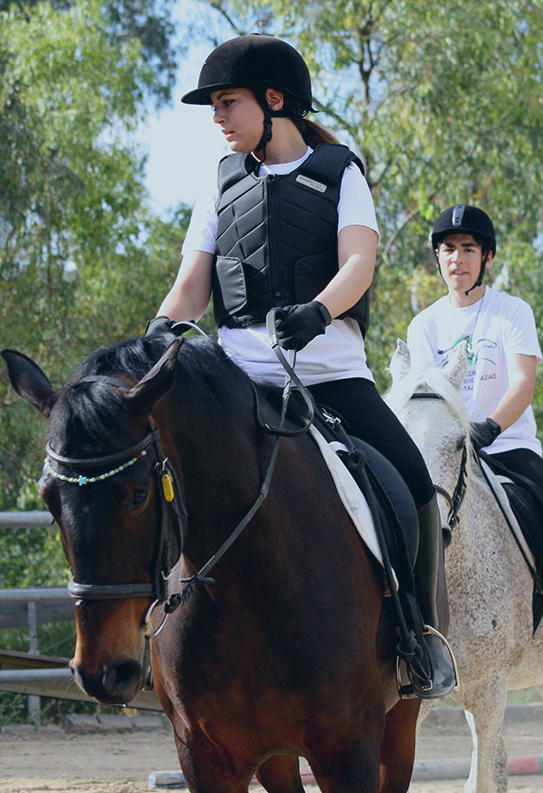What is Equine-Assisted Therapy?
The horse in this experiential therapy is a therapeutic means. Equine therapy is applied under certain conditions, namely specially-trained horses, suitable surroundings, expert staff, special equipment, etc.
It is clearly a therapeutic session that involves an array of rehabilitation experts (physical therapists, ergo-therapists, speech therapists, etc.). The rehabilitation session is moved to the horse arena where the horse replaces other therapeutic methods. The only difference between equine therapy and conventional rehabilitation therapy is the place (arena) and the means (horse). What is more, all procedures of conventional therapy (assessment, therapy protocol, aims of therapy, etc.) are followed as well.

What Conditions Does Equine Therapy Benefit?
According to the international bibliography Equine therapy is suitable for the following:
- Autism and Pervasive Developmental Disorders (PDD)
- Attention Deficit Hyperactivity disorder, Rett’s Syndrome, Asperger’s Syndrome
- Cerebral Palsy (all types of CP)
- Psycho-motor retardation
- Delay in Mental Development
- Down Syndrome
- Muscular dystrophy (various MD disorders)
- Spina bifida
- Spinal cord injury
- Multiple Sclerosis
- Stroke
- Blindness
- Hearing Loss
- Learning differences
- Behaviour Disorders
- Psychological or Psychiatric problems
- Various Syndromes (Angelman, Okamoto, etc.)
Some of the benefits and therapy outcomes:
- Improving body posture and balance.
- Improving neuromuscular control and muscle tone.
- Improving gait, co-ordination, spatial and temporal orientation.
- Improving sensory-motor function.
- Improving gross and fine motor skills.
- Psycho-motor development.
- Acquiring new cognitive skills.
- Cultivating communicative skills and sociability.
- Speech and language improvement.
Why horses?
The horse as a rehabilitation technique, offers intense yet controlled emotion, a series of physiological models that directly reach the brain. This is required by contemporary rehabilitation methods therefore, patients are helped to demonstrate increasing physiological responses. At the same time, expert therapists utilize an array of stimuli that correspond to the exercises performed and to the surroundings.
An additional element is that participating children –due to the use of the horse and the outdoors venue– don’t think of sessions as therapy and, as a result, there is no psychological strain or denial, although equine therapy is of high therapeutic value. Overall, sessions are extremely effective in that they offer both an exceptional rehabilitation method and strong motivation of patients.

